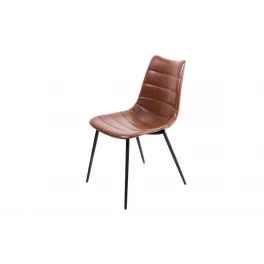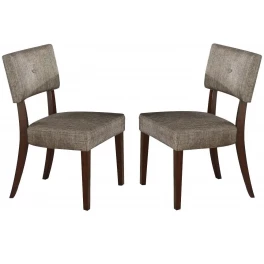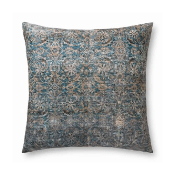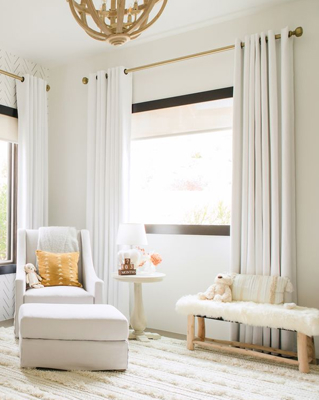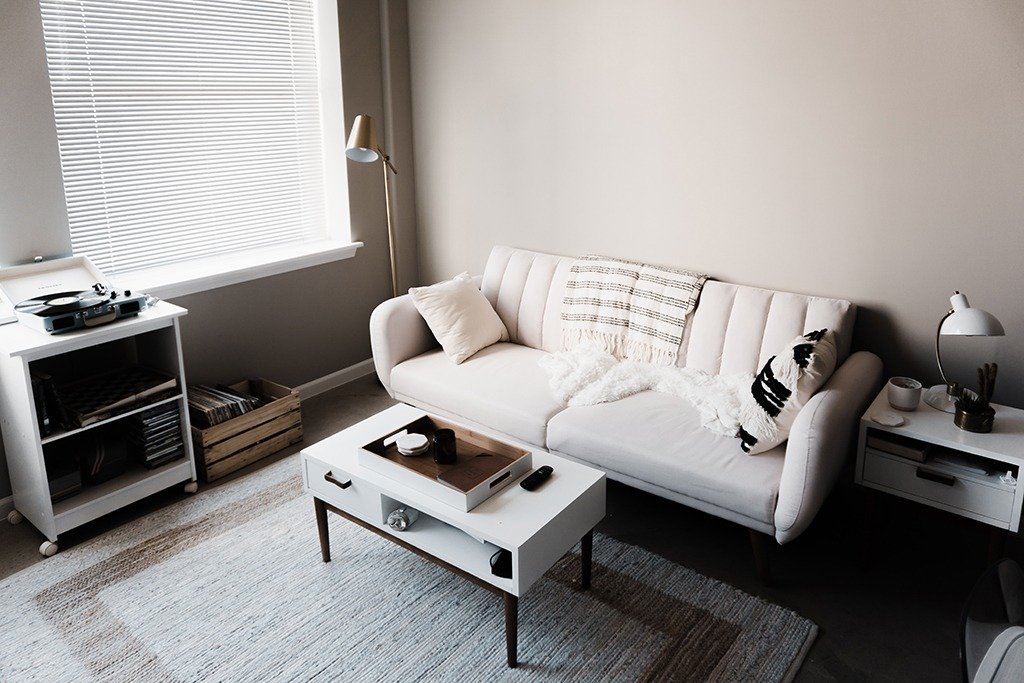Whether you’ve just painted or remodeled, or just looking to give a room a new look, consider these factors before setting out to buy your new curtains.
Lighting
Taking into consideration how much light will be coming into a room is a great starting place when choosing which color curtains to buy. Bright colors tend to fade faster, so depending on the material, if a room is getting a lot of light, a darker curtain could be more favorable. If optimizing the natural lighting is a key factor, perhaps for a living room or sunroom, it could helpful to consider different options with light fabric for curtains. For master bedroom curtain ideas, considering a darker shade of curtain would also help to keep the light from beaming in early mornings.

Photo by ostap25 on Adobe Stock
Furniture Color
One tip for picking out the right colored curtains is to consider the color of the furniture fabrics and accent pieces in the room. For living room curtain ideas, it might be helpful to look at the fabrics and textures already in the room, such as the couch and rug, prior to making a decision about how the curtain color will come into play. For example, with a darker leather couch, it may create a more luxurious atmosphere to match the curtains to the richness of the leather. The right choice in curtain color can be just what a room needs to pull its whole look together!

Photo by Photographee.eu on Shutterstock
Monochromatic Color Schemes
A monochromatic color scheme can give a room a cool, cohesive look and prevent color-clashing. To pull off this look, try choosing solid curtains of a fabric a slightly darker or lighter shade than the wall color, but within the same family of colors. A monochromatic color scheme can also create a calm atmosphere in any room. It can be great for a nursery, playroom, study space, or bedroom.

Photo by KUPRYNENKO ANDRII on Shutterstock
Complementary Color Schemes
A complementary color scheme can be a little trickier to pull off, but can give a room an edgy look that draws attention. Complementary colors (those opposite one another on the color wheel) can feel counterintuitive to use together in the same room. But for those trying to achieve a bold look, if you choose patterned curtains with a mix of neutral shades and the wall color’s complementary color, it can work. For example, if you’re considering a curtain color for a room with yellow walls, you could create a bold look by hanging some curtains with a patterned mixture of purple and beige. Research some curtain design ideas can give you a better idea of what types of curtain designs might go well with a room’s existing interior design. The trick is to avoid solid-color curtains of the wall color’s complementary color because this may result in an unaesthetic clash.

Photo by Edvard Nalbantjan on Shutterstock
Strong Wall Colors
Bright and bold colors can make it difficult to choose curtains that won’t become distracting with wall colors that are already making a powerful statement. This could be for any lively room, like a kitchen, living room, or dining room. In this case, neutral shades can be the best option to create the optimal look for a room. Similarly, it can be difficult to choose what curtain color for white walls would look ideal in a given room. Taking into account the furniture color and accents is especially crucial for shades of white.

Photo by OndroM on Shutterstock
There are a variety of factors to consider when determining how to select curtain color for a room. Whether you’re looking to change things up or to completely redecorate, the right curtain color can make a huge difference in the way you want a room to look and feel.





